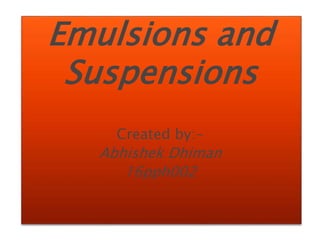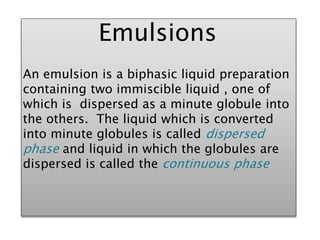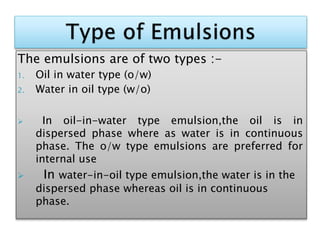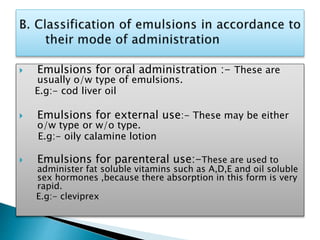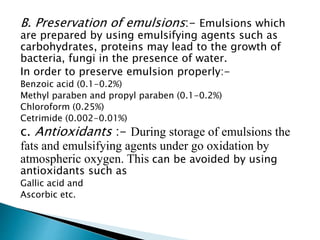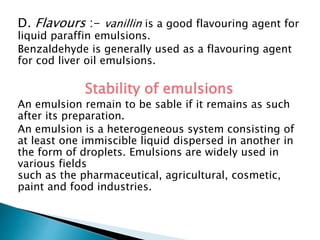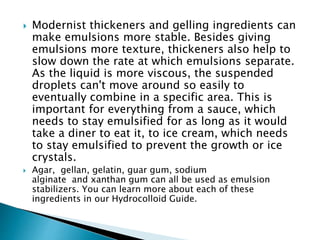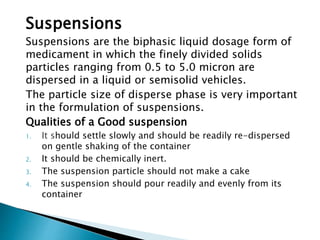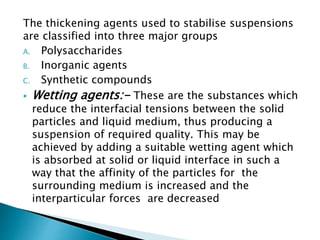This document discusses emulsions and suspensions. It defines emulsions as biphasic liquid preparations containing two immiscible liquids, one dispersed as globules in the other. Suspensions are biphasic preparations where finely divided solids are dispersed in a liquid vehicle. The document describes the types of emulsions and suspensions, how they are formulated, stabilized, and evaluated. Key factors that determine stability include particle size, choice of emulsifying or flocculating agents, viscosity, and electrokinetic properties.
